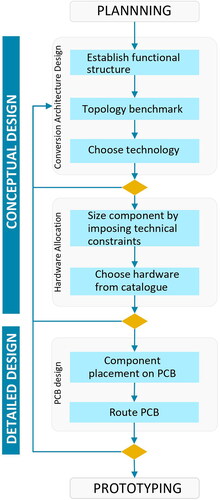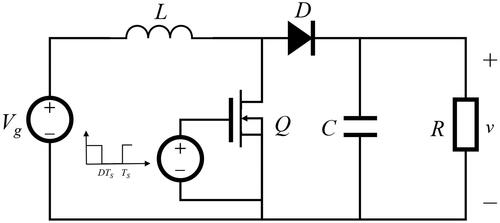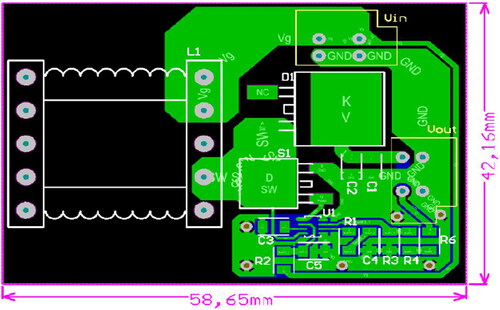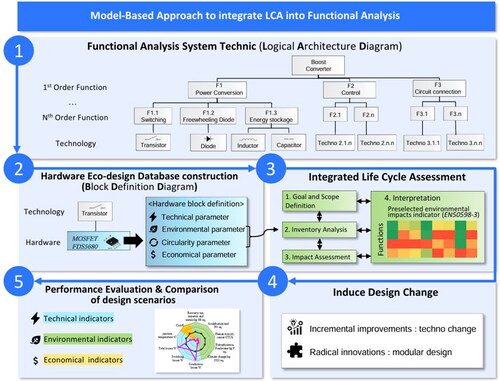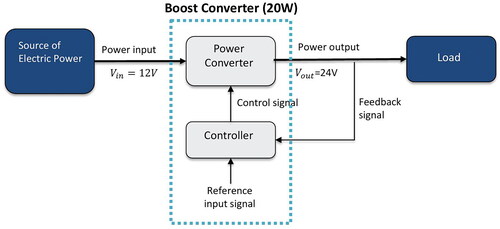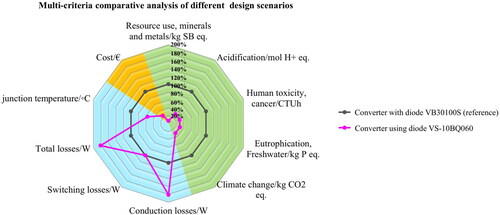Figures & data
Table 1. Eco-design approaches developed and applied in PE design research (Fang and Romano et al., Citation2023).
Table 2. Profiles of interviewees (adapted from [Fang et al., Citation2023]).
Table 3. Requirements for ecodesign support for integrating the specific ecodesign working and decision-making steps to the PCB-based PEC PDP.
Table 4. Parameters in Block Definition Diagram proposed in the FB-LCA parametric model developed.
Table 5. Example of hardware ecodesign database content (block definition diagram).
Figure 9. Heat map representation of manufacturing environmental impact tracking in converter’s functional structure.
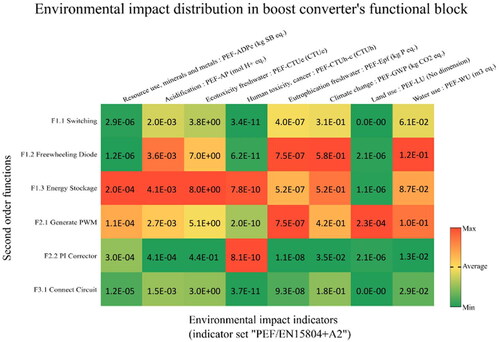
Supplementary Material.docx
Download MS Word (90.2 KB)Data availability statement
The authors confirm that the data supporting the findings of this study are available within the article and its supplementary materials. The corresponding author, Li Fang, agree to share the data upon reasonable request.

